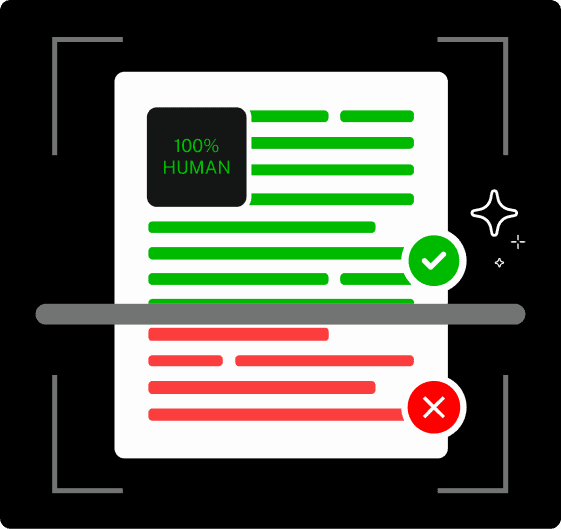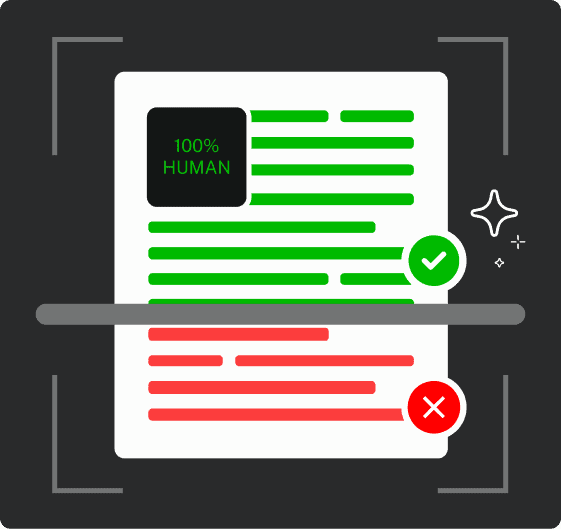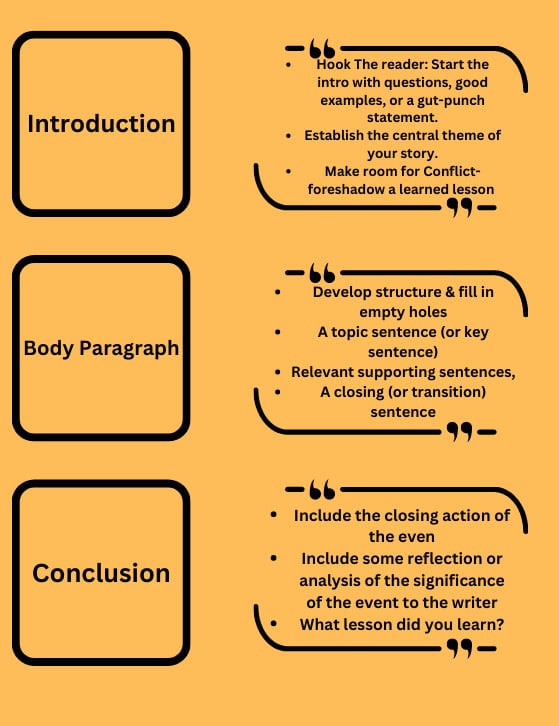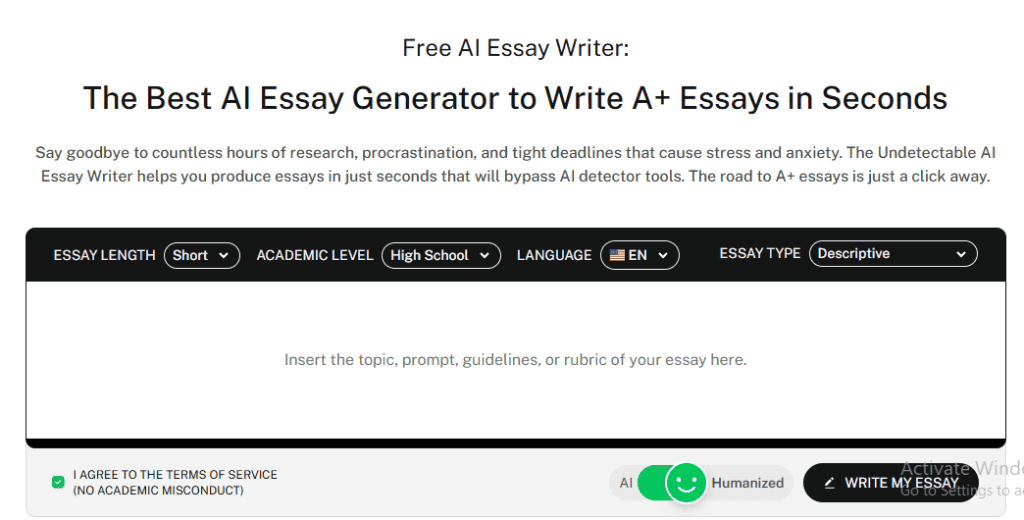Have you ever read the first line of a book and had to keep going?
Like in To Kill a Mockingbird
“When he was nearly thirteen, my brother Jem got his arm badly broken at the elbow.”
Or in The Catcher in the Rye
“If you really want to hear about it, the first thing you’ll probably want to know is where I was born…”
You don’t even know the full story yet – but you feel hooked.
You feel curious, pulled in, ready to go wherever the narrator takes you.
These are the openings of a narrative essay. They don’t explain, they immerse. They don’t tell, they show. They don’t instruct, they intrigue.
In this blog, we’ll explore exactly how to write these narrative essay openings.
We’ll cover hooking techniques that grab attention, planning strategies, common introduction mistakes, and examples of powerful openings.
By the end, you’ll know about the AI tools you need to write introductions that readers simply can’t turn away.
Let’s get started.
What Is a Narrative Essay?
A narrative essay is like telling a story on paper.
It could be about something that happened to you (a scary moment, a big decision, or a funny memory), or it could be a story you make up.
Either way, it reads like a mini-movie on paper, with a beginning, middle, and end.


Never Worry About AI Detecting Your Texts Again. Undetectable AI Can Help You:
- Make your AI assisted writing appear human-like.
- Bypass all major AI detection tools with just one click.
- Use AI safely and confidently in school and work.
A narrative essay has five key parts:
- Characters (like you and anyone else in the story)
- A setting (where and when it happens)
- A conflict (something that goes wrong or needs to be fixed)
- A climax (the most intense moment)
- A resolution (how it all ends).
The tone is usually personal and casual – like you’re talking to someone.
You can use personal pronouns like “I” or “me,” strong action verbs, and lots of details that make the reader see, hear, and feel what you did.
And there’s a big difference between a narrative essay and other kinds of essays.
It’s not just explaining a topic (like an expository essay), or trying to convince someone (like a persuasive one), or just describing a thing (like a descriptive one). It’s about living something – with the reader right beside you.
Techniques for Starting a Narrative Essay

Image source – Calltutors
Beginning is the most important part and it’s what pulls people in – or pushes them away. Here are different techniques of starting a narrative essay.
Technique # 1
Start with dialogue. That means you jump right into someone talking. It makes readers feel like they’ve just walked into a moment that’s already happening.
For example,
- “Don’t open that door,” my sister whispered. But I already had.
- “I thought we agreed we wouldn’t talk about it,” my said, her voice shaking.
That line makes you want to keep reading. Who’s behind the door? What’s going on?
Technique # 2
Start with action. Don’t add any warm-up.
For example,
- I slipped on the wet floor and slammed into the locker, breath knocked out of me.
- The car swerved, tires screeching, as I gripped the seat for dear life.
Now you’re in the middle of something – and you reader is too.
Technique # 3
Start by asking a question.
For example,
- Have you ever been so scared you forgot your own name?
- What would you do if your best friend betrayed you?
It invites the reader into the story, like you’re talking directly to them.
Technique # 4
Share a bold fact or strong statement – something surprising or true that makes someone pause.
For example,
- I lied to my best friend and lost her for three years.
- This was the last time I ever saw my father alive.
That’s heavy. That’s real. And it makes you want to understand what happened next.
Technique # 5
Paint a scene with sensory details. Use sounds, sights, smells – anything that puts someone in your shoes.
For example,
- The air smelled like burnt toast and worry. My dad hadn’t spoken since the phone rang.
- The scent of fresh rain mixed with the earthy smell of wet grass, and I felt the cold wind on my skin.
Each of these methods works because they hit us right where it counts – in our curiosity, our hearts, or our memories.
A good hook gets someone to lean in. Then, they stay because they want to know more.
Here’s a quick way to think about it:
Hook → Curiosity → Momentum → Emotional Buy-In
Once someone feels something, they’ll keep reading. And here’s a tiny trick that makes a big difference: Show, don’t tell. Instead of saying “I was nervous,” you can show it.
Telling: I was nervous on my first day.
Showing: My hands wouldn’t stop shaking as I reached for the classroom door.
See the difference? One just says it. The other makes you feel it.
How to Plan Before You Start Writing

It might feel exciting to just jump in and start writing – but that’s when things can fall apart without a solid plan.
The story can get messy or you might forget what you were trying to say.
Step # 1 – Storyboarding
Storyboarding just means sketching out the big parts of your story.
- How does it begin?
- What’s the problem or conflict?
- What’s the most intense part (the climax)?
- How does it all end?
These are your story bones. Without them, it can’t stand up.
Step # 2 – Create a Theme
What is the story about? Maybe it’s about learning to trust again. Or standing up for yourself. Or letting go.
Knowing this helps you stay focused.
Step # 3 – Brainstorm the Outline
Now choose how you want to do it.
- Will you go from beginning to end? (the chronological order)
- Will you start in the middle and use flashbacks to fill in the past? (the non-linear storytelling).
Step # 4 – Select Your Main Character
Identify your protagonist (main character).
- Who is this story really about?
- What do they want?
- What are they scared of?
- What do they have to lose?
Knowing what’s at stake makes readers care.
Step # 5 – Brainstorm Your Senses
Before you start writing, brainstorm your senses.
- What did the room look like?
- What could you hear?
- How did it feel – inside your body and your heart?
Write these down because they’ll bring your story to life later.
For the step-by-step guidance on writing a narrative essay, read this blog << How To Write A Narrative Essay >>
Examples of Strong Narrative Essay Introductions
Let’s look at a few examples. These are short beginnings from different types of narrative essays.
Example # 1
“Get in the car – now!” my mom shouted, panic twisting her voice.
I grabbed my shoes and ran, not even stopping to close the door behind me.
Technique used: Dialogue + Action
You’re right in the middle of something scary and urgent. This grabs attention fast.
Breakdown:
- Sentence structure: Short, fast, builds tension
- Verb choice: “shouted,” “grabbed,” “ran” – all strong and quick.
- Tone: Urgent
- POV: First-person, present moment
Example # 2
“The sky was the color of wet cement. I stood on the edge of the diving board, heart pounding, legs stiff. Everyone was watching.”
Technique used: Sensory setting + Inner tension
You feel what the writer sees and feels. It builds suspense quietly.
Breakdown:
- Hook: Visual description (“sky… wet cement”)
- Setting: Swimming pool scene
- Tension: Reader wonders-will they jump?
- Tone: Nervous, vulnerable
- POV: First-person
Example # 3
“Have you ever made a decision that changed everything? I did. One phone call, and my life split in two – before and after.”
Technique used: Rhetorical question + Reflection
This feels personal, like someone is about to tell you something big.
Breakdown:
- Hook: Question draws reader in.
- Tone: Reflective, serious
- Structure: Short sentences for impact
- POV: First-person
Each of these intros does one thing well – it makes you feel something. That’s the goal. Whether it’s tension, curiosity, fear, or warmth, a strong beginning opens a door the reader wants to walk through.
Get the narrative essay checklist here << Narrative Essay – Miami University >>
Mistakes to Avoid in Your Introduction
Writing a good intro is like opening a door to your story. If the door is rusty, stuck, or too boring… no one wants to walk in.
Let’s fix that by learning what not to do – and how to do it better.
Mistake # 1: Being Too Vague or Generic
If your introduction is too vague, your readers won’t know what to expect or why they should care about your story.
Bad example: Something happened that changed my life forever.
This sentence is boring because the reader doesn’t know what “something” is or why it matters.
Good example: The fire alarm went off just as I was about to tell my secret – and everything changed.
This example gives immediate intrigue. The “fire alarm” creates tension, and the “secret” makes you want to know more.
Mistake # 2: Info-Dumping Background Too Early
Starting with too much background information can bore the reader. It’s important to gradually introduce details through the story, not all at once.
Otherwise, you’ll lose your reader’s attention.
Bad example: My grandma was born in 1940 and grew up in a small village. She lived there until she was 20, then moved to the city. She loved gardening and had two dogs.
This is just a list of facts. It’s not engaging.
Good example: My grandma handed me the old letter with shaking hands. ‘Read it out loud,’ she whispered.
This example immediately introduces an emotional situation.
Now, the reader wants to know why Grandma is nervous and what the letter says.
Mistake # 3: No Emotional Hook
Without an emotional hook, your readers won’t care about the story or feel motivated to keep reading.
Bad example: One day, I went to school like usual.
This is flat and uninteresting. It doesn’t create any emotional connection, and it doesn’t give the reader a reason to keep reading.
Good example: My stomach twisted as I walked into class, holding the drawing I swore I’d never show anyone.
This one is full of emotion. You can feel the writer’s nervousness, and it makes you want to know what’s so important about the drawing.
Mistake # 4: Passive Voice or Weak Verbs
Using passive voice or weak verbs makes the writing feel distant and less exciting. When you use strong verbs, the action feels more real, and your writing comes to life.
Bad example: The window was broken by the ball that was kicked by me.
This sentence uses passive voice, making it awkward. The action feels weak and disconnected from the person involved.
Good example: I kicked the ball – and it smashed straight through the window.
This version is active and engaging. The strong verb “smashed” makes the action immediate and powerful. You’re right at the moment.
Mistake # 5: Starting Too Far from the Action
Starting your story with too much setup or background can bore the reader.
You want to jump into the action and give them a reason to keep reading.
Bad example: I was born in Texas, then moved to Florida when I was five. My parents liked the warm weather, so we stayed there. I went to a small school….
This doesn’t get to the interesting part of the story quickly enough. The reader has no idea why this background information matters yet.
Good example: As I sat on the bus, I felt my palms sweat, clutching the letter that could change everything.
This is immediately in the middle of the action.
The reader is hooked by the tense moment, wondering what’s in the letter and why it’s so important.
How AI Tools Can Help You Start Strong
If the blank page stares at you, and you’re not sure where to begin the narrative essay type, AI tools can help.
Let’s break down how different AI tools can help you write a strong introduction:
AI Essay Writer

AI Essay Writer is great at generating creative hooks and compelling intros quickly.
It’s perfect for when you’re stuck at a blank page.
For example, if you want to write about a childhood adventure, but you don’t know how to make it exciting from the start, an AI Essay Writer can provide several engaging opening lines to jumpstart your story.
Human-Written Version: It was a hot summer day, and I was just bored.
AI Output: The summer afternoon felt endless, but I didn’t mind. That’s when I made a decision that would change everything.
Paraphrasing tool
Sometimes your words don’t quite come out the way you want.

An Paraphrasing tool helps refine awkward phrasing, making your intro career more impactful.
Original: I was so scared, but I knew I had to do it.
AI-Enhanced: Fear gripped me, but deep down, I knew I had no choice.
AI Chat

You can use AI Chat to brainstorm story arcs, check your tone, or get suggestions for improvements.
This tool act as a writing partner that helps guide your thinking and refine your approach.
For example,
- Give me 3 intro ideas for a story about a childhood memory.
- Help me develop a stronger opening for a story about my first day at school.
By interacting with the AI in this way, you can quickly come up with fresh ideas and find the perfect way to start your story.
Want to see our AI Detector and Humanizer in action? Check them out in the widget below!
FAQs About Starting a Narrative Essay
Should I start with dialogue or action?
It depends on the story you’re telling. Dialogue feels like we’re dropping into a moment that’s already alive.
Action pulls us in with the movement.
If your story starts with a big moment, try action. If it starts with a conversation that matters, go with a dialogue.
How long should the intro be?
An introduction should ideally be 3 to 6 sentences long.
That’s enough length to pull the reader in, set the mood, give a hint of what’s coming.
Can I write in the first person?
Yes. Most narrative essays are written in first person – using I, me, my.
It helps your story feel real and personal, like you’re talking to the reader. And that’s powerful.
What’s the best way to end the introduction?
The best way to end the introduction is adding a little tease. Hint at the problem or the twist – just enough to keep your reader curious.
For example, I thought it was just a normal Tuesday… until I opened the locker and saw what was inside.
Conclusion
Narrative essays are all about making your readers feel like they’re right there with you, experiencing every twist and turn of your story.
Your introduction is the chance to grab their attention and keep them hooked.
So, get creative, throw in a little mystery, and leave them wondering what happens next.
Remember, a good story isn’t just told – it’s felt.
Now go ahead, make that first line so irresistible they can’t put your essay down.
